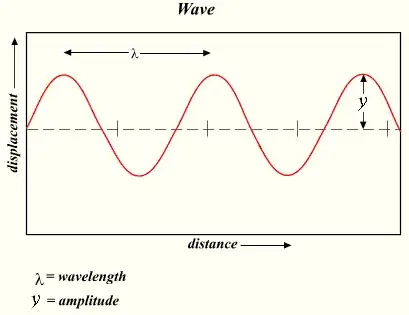In EM radiation, there are no electrons involved (well, there usually are electrons moving around in the antenna that produces the radiation, but not in the radiation itself).
So... what do these "10 meters" refer to? That's the so-called wavelength. EM radiation travels in waves, but now what does that mean? Let's first go to another type of waves: Water waves.
If you look at a bunch of waves and measure the distance of their crests to each other, you get the wavelength: The picture below shows a snapshot of a wave, and $\lambda$ denotes the wavelength.

If, on the other hand, you would stay in one place and count how often at that specific point the water rises up and down in one complete cycle and if you count the cycles per seconcd, that would give you the wave frequency.
Now, in electromagnetic radiation, what is moving up and down is not actual matter. It is just the strength of the electric and magnetic field at a particular point. Imagine you had some fancy measurement device that would tell you the strength of the electric field. Then if you'd keep it at one point in space, it would oscillate between a maximum and a minimum with a certain frequency. For radio waves, that's usually around $100 MHz$, i.e. 100 Million cycles per second.
If, on the other hand, you could record a snapshot in time of your electric field and compare how far apart two maxima are, you would obtain the wavelength.
So, what's "moving" around are the electric and magnetic fields, not actual charges. Thus, drawings of radio waves as beams of waves are accurate pictures of what's going on, unless you go to very very low intensity radio waves where you have to start thinking about the quantum nature of EM radiation...

